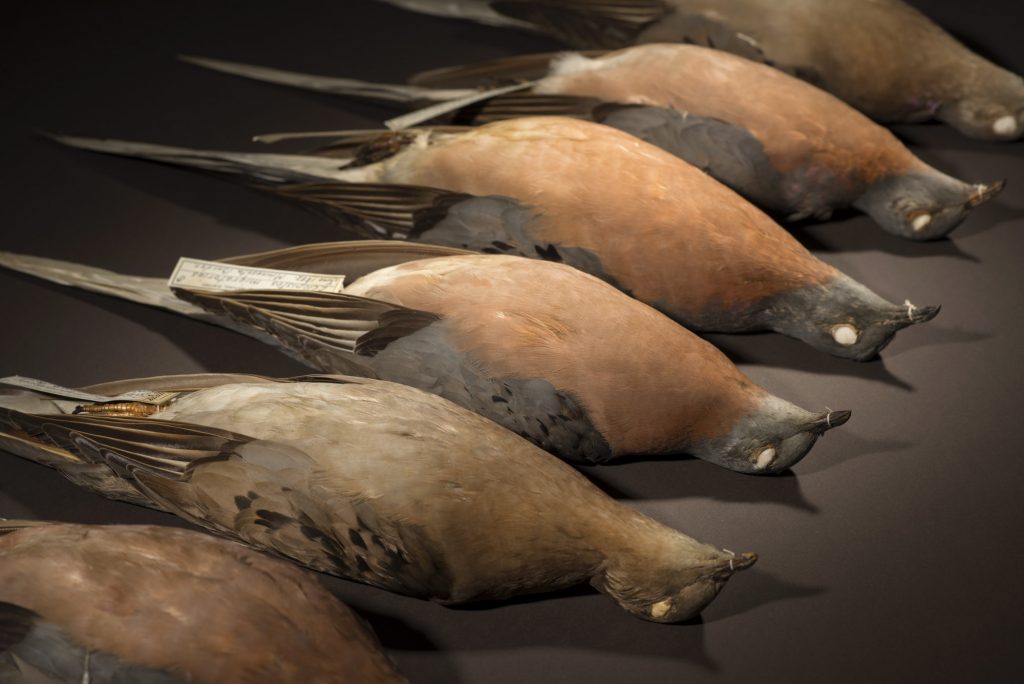Throughout history, human civilization has been both a guardian and a devastator of biodiversity. Few narratives accentuate this duality as poignantly as that of the passenger pigeon (Ectopistes migratorius), a species once abundant in North America that met a tragic demise in the early 20th century. The passenger pigeon serves as a compelling case study, not only because of its extinction but also due to the rich tapestry of cultural meanings attributed to it over time. This article delves into the question, “Are there any passenger pigeons left?” to elucidate the broader implications of their extinction through a cultural relativism lens.
The passenger pigeon was not merely a bird; it was a phenomenon. At its zenith, the species’ population was estimated in the billions, making their flocks a breathtaking spectacle across the North American landscape. Each migration and breeding season would elicit awe from observers, evoking a sense of abundance that had profound implications for the cultures that coexisted with them. Yet, the narrative shifts dramatically with their extinction—officially declared extinct in 1914 when the last known individual, named Martha, died in captivity in the Cincinnati Zoo. This event does not just encapsulate the loss of a species but symbolizes a failed stewardship of nature, raising haunting questions about responsibility, exploitation, and human impact on the environment.
To dissect the legacy of the passenger pigeon through the lens of cultural relativism is to recognize that the values, beliefs, and practices surrounding their existence and eventual disappearance are deeply embedded in the historical context. Indigenous peoples revered the passenger pigeon, often viewing it as a vital resource for sustenance and cultural identity. Their practices reflected a sustainable relationship with nature, fostering an attitude of gratitude and reverence towards all living beings. However, as colonial expansion accelerated in the 19th century, attitudes shifted. The commodification of resources replaced traditional ecological knowledge in many communities, culminating in wanton exploitation as the demand for passenger pigeon meat grew.
The most troubling aspect of the passenger pigeon’s narrative is not merely their extinction but the rapidity with which it occurred, exposing a blinkered anthropocentric worldview. By the late 1800s, intense hunting and habitat destruction led to an alarming decline in their numbers. This shift from reverence to commercial exploitation reflects a broader societal tendency that often prioritizes immediacy over sustainability. As such, cultural relativism prompts us to examine the ecological and ethical implications of this transformation: How could societies that once revered nature precipitate its degradation with such nonchalance?
Culturally, the passenger pigeon has transcended its biological existence. The term “passenger pigeon” is frequently invoked in contemporary discourses about conservation, environmental ethics, and the need for sustainable practices. This phenomenon illustrates the complexities of memory and legacy. We engage with the memory of the passenger pigeon not solely as a cautionary tale but as a mobilizing narrative that shapes our current ecological ethics. The extinction of the passenger pigeon has become a symbol of humanity’s broader struggle to balance growth and sustainability, compelling us to reflect upon our relationship with the environment critically.
The fascination with the passenger pigeon extends beyond environmental discourse. They have become cultural artifacts, emblematic of the interplay between culture and nature. Literature and art have co-opted the imagery and symbolism associated with these birds, giving rise to a rich narrative that delves into themes of loss, nostalgia, and the irretrievability of the past. This cultural legacy invites deeper reflections about what it means to lose a species and how such losses resonate within human consciousness.
Modern conservation efforts also draw stark parallels to historical narratives surrounding the passenger pigeon. The race against extinction has galvanized diverse communities and sparked a renewed interest in rewilding initiatives, genetic studies, and even attempts at de-extinction. These endeavors raise salient ethical questions about the feasibility and morality of resurrecting species. Many wonder: Is it ethically sound to use advanced biotechnology to bring back a species that succumbed to human negligence? Will this pursuit dilute the lessons gleaned from their extinction? In asking these questions, we must invoke the spirit of cultural relativism to explore differing societal values regarding nature and technology.
Efforts to honor the legacy of the passenger pigeon also manifest through educational initiatives and policy reforms aimed at protecting endangered species. The very discussions sparked by their extinction underscore the importance of integrating ecological wisdom with cultural understanding. As society grapples with its ecological footprint, the passenger pigeon serves as a melancholic reminder that the consequences of human inaction today may reverberate through generations.
In conclusion, the question of whether any passenger pigeons are left serves as a powerful rhetorical device that prompts broader reflections on extinction and cultural engagement with nature. The passenger pigeon may no longer soar through the skies of North America, but it has left behind a profound legacy that incites discussions about ecological stewardship, cultural values, and ethical responsibilities. An understanding of this narrative, considering cultural relativism, promotes a holistic approach to assessing human interactions with biodiversity, emphasizing the need for humility and foresight in our sustainable endeavors. Ultimately, the passenger pigeon epitomizes the complex interplay between culture and nature, signifying not just a cautionary tale but a persistent call to action for current and future generations.
